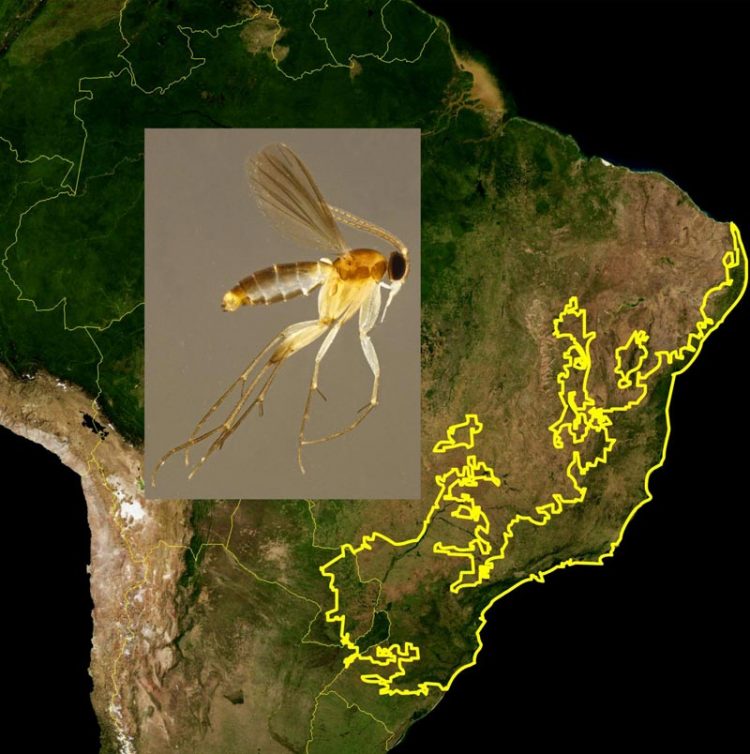Scientists discovered 20 new gnat species in Brazil

The Atlantic Forest ecoregion in Brazil where new species were found. Credit: Olavi Kurina/wwf.org
The Atlantic Forest ecoregion in Brazil is an area with diverse nature, following the coastline of the country and embracing tropical, subtropical and mangrove forests, also shrubland and grassland, described Olavi Kurina. “There are many endemic species known in this region.”
In addition to the known biodiversity, in September the researches described in these rainforests 20 gnat species in the genus Manota that were new to science.
The described species belong to the family of fungus gnats (Mycetophilidae) and are small flies, from 1.5 to 3mm long, with specific differences lying mainly in terminal morphology of the male specimens, specified Olavi Kurina.
The new species received scientific names by their morphological features and in honour of colleagues who had contributed to the research. As a result of zoogeographic analysis, a discrepancy was described between the comparatively wide distribution of the Manota species and the areas of endemism known for Diptera in South America and in Brazilian Atlantic Forest particularly.
###
The study, the first in-depth treatment of the genus Manota in Brazil, was carried out in cooperation with Estonian University of Life Sciences, University of Turku and University of São Paulo.
The type material of the new species is deposited in the insect collections of Estonian University of Life Sciences and University of São Paulo (international acronyms IZBE and MZUSP, respectively).
The scientific journal Zootaxa, a mega journal for zoological taxonomists in the world, published an article on this topic: http://www.
Media Contact
More Information:
http://dx.doi.org/10.11646/zootaxa.4472.1.1All latest news from the category: Life Sciences and Chemistry
Articles and reports from the Life Sciences and chemistry area deal with applied and basic research into modern biology, chemistry and human medicine.
Valuable information can be found on a range of life sciences fields including bacteriology, biochemistry, bionics, bioinformatics, biophysics, biotechnology, genetics, geobotany, human biology, marine biology, microbiology, molecular biology, cellular biology, zoology, bioinorganic chemistry, microchemistry and environmental chemistry.
Newest articles

Properties of new materials for microchips
… can now be measured well. Reseachers of Delft University of Technology demonstrated measuring performance properties of ultrathin silicon membranes. Making ever smaller and more powerful chips requires new ultrathin…

Floating solar’s potential
… to support sustainable development by addressing climate, water, and energy goals holistically. A new study published this week in Nature Energy raises the potential for floating solar photovoltaics (FPV)…

Skyrmions move at record speeds
… a step towards the computing of the future. An international research team led by scientists from the CNRS1 has discovered that the magnetic nanobubbles2 known as skyrmions can be…





















